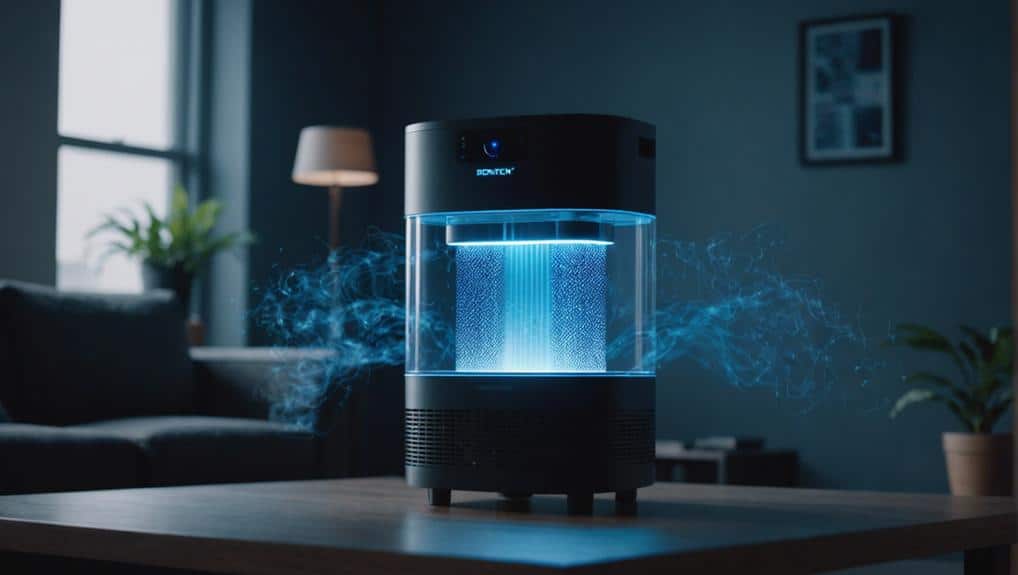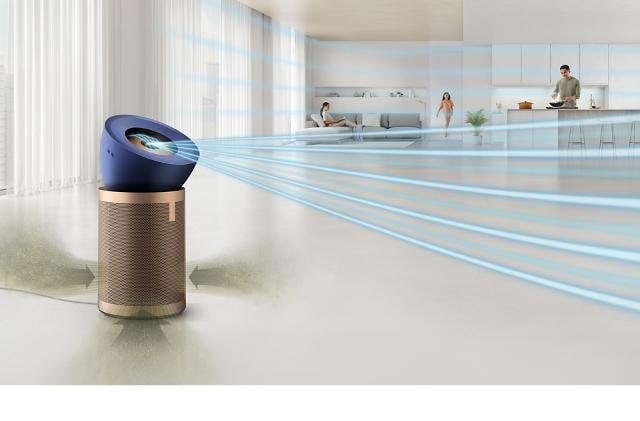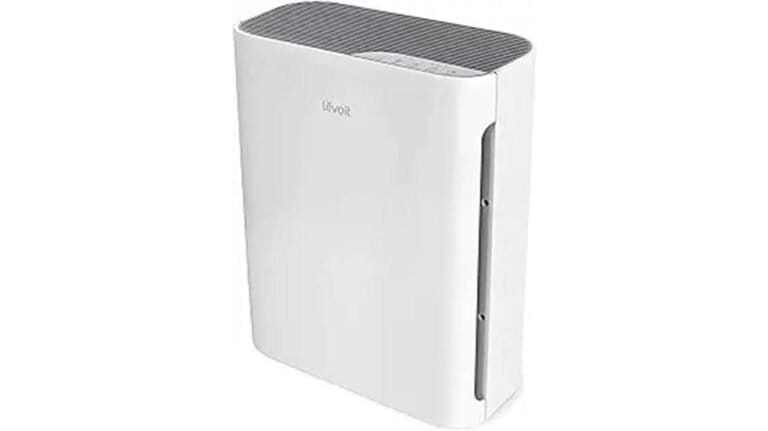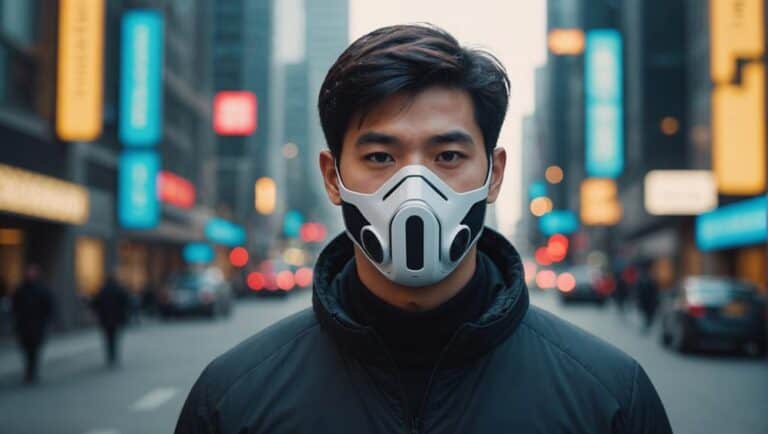Effectiveness of UV Air Purifiers
As we explore the world of indoor air quality solutions, one cannot overlook the fascinating domain of UV air purifiers. These devices promise to eliminate harmful pathogens and sanitize the air effectively, but do they truly live up to their claims? Let’s investigate the world of UV light technology and its impact on our living environments to uncover the nuances of their effectiveness in creating healthier indoor spaces.
UV Air Purifiers: How They Work
UV air purifiers operate by utilizing UV light technology to eradicate viruses and sanitize indoor air. These devices are designed to improve indoor air quality by utilizing UV-C light to kill microorganisms like bacteria and viruses. In conjunction with HEPA filters, UV air purifiers can capture and eliminate harmful particles from the air, providing a thorough air purification solution.
The UV light used in these purifiers works by disrupting the DNA of microorganisms, rendering them unable to reproduce and effectively killing them. By incorporating UV-C light chambers into the air purification process, UV air purifiers offer a robust defense against airborne pathogens. This method of air purification is particularly appealing to individuals who seek a proactive approach to maintaining a clean and healthy indoor environment.
Inactivation of Microorganisms by UV
UV light, particularly UV-C, effectively eliminates microorganisms by damaging their genetic material and preventing replication. The germicidal action of UV light primarily targets nucleic acids, causing genetic harm and cell death in pathogens.
UV air purifiers harness this mechanism to reduce the viability of bacteria, viruses, and other harmful microorganisms in the air and on surfaces.
UV Microorganism Inactivation
With its strong absorption by nucleic acids, the 254nm wavelength of light effectively inactivates microorganisms, contributing to improved indoor air quality through the use of UV air purifiers.
UV-C light, known for its germicidal effect, targets airborne pathogens in air purification systems. Studies demonstrate that UV-C light can achieve up to a 99.9% inactivation rate of various pathogens, including bacteria and viruses.
This inactivation process occurs as UV-C light penetrates the microorganisms’ cell walls, disrupting their DNA structure and rendering them harmless.
Germ Elimination With UV
Effective in eliminating germs, UV light in the germicidal range (UV-C, 200-300nm) disrupts the DNA and RNA of microorganisms. The germ elimination process through UVGI systems relies on factors like UV light intensity, exposure duration, and the specific wavelength used. UV air purifiers deliver a calculated UV dose (measured in mJ/cm²) to effectively eliminate or inactivate a high percentage of microorganisms in the air or on surfaces. Ensuring ideal germ elimination requires precise UV dose calculation and delivery. By controlling the UV dose delivered to the target area, UV air purifiers can efficiently reduce microbial contamination. Below is a table outlining key factors influencing germ elimination with UV:
| Factors | Description | Importance |
|---|---|---|
| UV Light Intensity | Strength of UV radiation applied | High |
| UV Dose | Amount of UV energy delivered over a specific area | Critical |
| Exposure Duration | Length of time microorganisms are exposed to UV | Significant |
Advantages of UV Air Purifiers

Utilizing advanced UV light technology, air purifiers equipped with UV technology offer numerous advantages in effectively sanitizing indoor spaces. UV air purifiers are highly effective in killing airborne pathogens, such as viruses and bacteria, thereby reducing the presence of harmful contaminants in the air. By incorporating HEPA filtration, UV air purifiers can further enhance indoor air quality by efficiently removing allergens and other particles from the air. This combination of UV light technology and air filtration not only sanitizes the air but also helps in eliminating harmful pathogens and allergens, making indoor spaces healthier to breathe in.
UV air purifiers are particularly beneficial for individuals seeking to control the quality of the air they breathe, especially in spaces where airborne contaminants may be a concern. The technology in UV air purifiers provides an added layer of protection against harmful pathogens, which is advantageous for maintaining a clean and healthy indoor environment.
Disadvantages of UV Air Purifiers
Deploying dirty UV lights in air purifiers can lead to a rapid loss of effectiveness in killing viruses efficiently, posing a significant drawback to their utility.
The disadvantages of UV air purifiers include:
- Efficiency: Dirty UV lights lose their effectiveness rapidly, compromising the air purifier’s ability to efficiently eliminate viruses.
- Cost: The inclusion of UV lights increases the overall cost of air purifiers, making them a pricier option compared to traditional models.
- Hazardous: UV-C light, if not properly contained, can leak out and pose a hazard to users, necessitating caution during operation.
Considering these drawbacks, it’s crucial to weigh the potential limitations of UV air purifiers against their benefits to make an informed decision. Prioritizing maintenance, cost considerations, and safety protocols is important when utilizing UV air purifiers for air purification needs.
Safety Considerations With UV-C Light

Let’s address the potential risks associated with UV-C light exposure.
UV-C light can harm our eyes and skin, leading to issues like skin reddening and eye irritation.
It’s important to take safety precautions to prevent any long-term damage from UV-C light exposure.
UV-C Light Exposure
When working with UV-C light sources, it’s vital to prioritize safety by implementing protective measures to prevent skin and eye damage. Protective measures like wearing UV-blocking glasses, gloves, and clothing are essential.
Prolonged direct exposure to UV-C light can cause DNA damage in skin cells. Understanding the potential hazards of UV-C light exposure is important for safe use.
It’s important to recognize that UV-C light exposure can lead to skin damage, eye damage, and even increase the risk of skin cancer. By following proper safety protocols and using protective gear, individuals can minimize the risks associated with UV-C light exposure and guarantee safe operation of UV air purifiers.
Ozone Emission Risks
Considering the risks associated with ozone emissions from UV air purifiers, it’s essential to prioritize respiratory health when selecting indoor air purification systems.
Ozone emission risks are a significant concern as they can lead to respiratory symptoms and exacerbate pre-existing conditions. Opting for ozone-free alternatives, such as HEPA filter air purifiers, is vital to mitigate exposure to harmful ozone emissions.
When choosing UV air purifiers for indoor air purification, it’s important to carefully assess the potential impact of ozone on respiratory well-being. Prioritizing ozone-free technologies like HEPA filters ensures a safer indoor environment and reduces the risk of adverse health effects associated with ozone exposure.
Selecting air purification systems that are free from ozone emissions is key to maintaining a healthy respiratory system.
UV Air Purifiers in Air Disinfection
In air disinfection, UV air purifiers harness UV light technology to effectively kill viruses and bacteria present in the air. When considering UV air purifiers for air disinfection, it’s important to understand the key points:
- UV dose delivered determines effectiveness in killing viruses.
- UV air purifiers with HEPA filters capture viruses, enhancing the disinfection process.
- Limited exposure time of air to UV light challenges the eradication of the COVID-19 virus.
Controlling the disinfection process is essential, especially in the context of the current pandemic. Ensuring the appropriate UV dose is vital to achieving satisfactory results. Additionally, combining UV technology with HEPA filtration can provide a holistic approach to air purification.
As we navigate through these challenging times, having control over the air disinfection process gives peace of mind and confidence in the safety of our indoor environments.
UV Air Purifiers in Water Treatment

Utilizing UV air purifiers in water treatment processes guarantees the effective elimination of pathogens, safeguarding water sources and promoting safety standards. UV air purifiers, specifically those incorporating UV-C light technology, play a vital role in disinfecting water by harnessing the germicidal properties of UV light. UVGI, which dates back to its introduction for water treatment in Marseille, France in 1910, has since been refined with the quantification of bactericidal action spectra in the late 1920s, paving the way for its widespread use in water disinfection. UV dosage guidelines, taking into account factors like flow rate, transmittance, and turbidity, ensure the efficient inactivation of microorganisms in water. Below is a table highlighting the key components of UV air purifiers in water treatment:
| UV Air Purifiers in Water Treatment | |
|---|---|
| UVGI Introduction | 1910, Marseille |
| Bactericidal Action Spectra | Late 1920s |
| UV Dosage Guidelines | Flow rate, transmittance, turbidity |
Conclusion
Overall, UV air purifiers are highly effective in improving indoor air quality by eliminating harmful pathogens and sanitizing the air. They work by targeting the genetic material of microorganisms with UV-C light, inactivating bacteria and viruses to reduce the risk of airborne diseases.
While they have advantages in air disinfection, it’s important to take into account safety precautions with UV-C light. When used in combination with HEPA filtration, UV air purifiers offer a thorough solution for creating healthier indoor environments.






